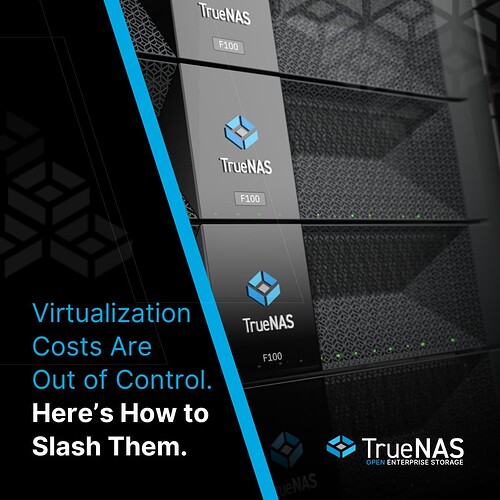Hey all!
One topic that’s been on our minds at TrueNAS lately is how the underlying storage infrastructure can really impact the overall cost of virtualization, especially given some of the recent shifts in the licensing landscape.
We recently published a blog post that dives into this, exploring how TrueNAS, particularly with the latest 25.04 release (“Fangtooth”), offers features like high-performance NVMe and intelligent deduplication to help consolidate your virtualization hosts and potentially reduce licensing overhead.
Here are a few key points from the article that you might find interesting:
- Achieving sub-millisecond latency with TLC NVMe drives for improved performance.
- Implementing deduplication that’s specifically designed for virtualized environments.
- Utilizing Fast Copy for faster and more efficient VM provisioning.
- Leveraging the benefits of an open, ZFS-based architecture, avoiding vendor lock-in.
The blog post also shares a real-world example of a customer who’s projecting substantial long-term savings by adopting this approach with TrueNAS. You can check out the full article here:
Slash Your Virtualization Costs with TrueNAS
I’m really interested to hear if anyone in the community has already experimented with similar approaches using TrueNAS, or if you’re thinking about how storage efficiency could play a role in your virtualization setup. Always keen to learn from everyone’s experiences!
